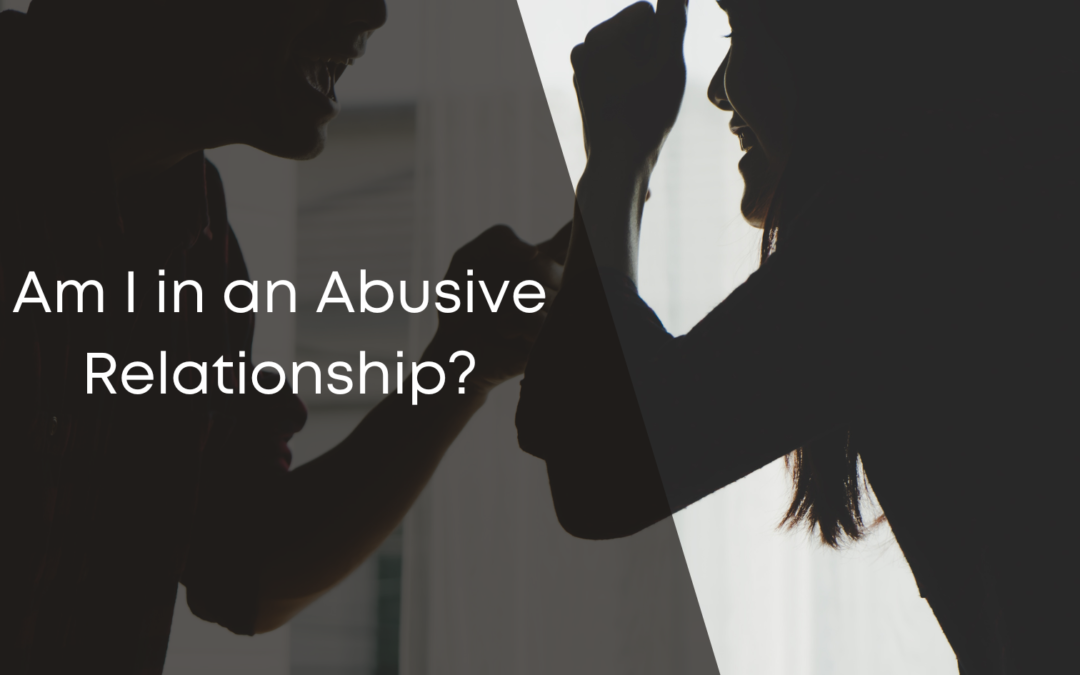Navigating the complexities of a difficult marriage can be overwhelming, but even more confusing is trying to understand if the relationship has crossed into abuse. When emotions run high, especially in the context of a divorce, it can be hard to see what’s really happening. You may find yourself wondering, “Is this just a rough patch, or is there something fundamentally wrong?” This uncertainty is common, and for many, it’s the first step toward clarity.
Recognizing the Problem
Identifying abuse in a relationship means examining three critical areas: the reality of abusive behavior, the impact on your personal wellbeing, and the fundamental issue of fairness and respect.
Abuse can often hide in plain sight, showing up as control, manipulation, or subtle (or blatant) aggression. It might take the form of verbal attacks, emotional manipulation, or physical intimidation, all of which create a hostile environment. As divorce looms, many people begin to question whether these harmful behaviors were always present or if they escalated over time.
Acknowledging abuse during divorce can feel deeply unsettling, like a betrayal of past choices. You might wonder, “How did I end up here?” and feel waves of self-doubt, shame, or even failure. This emotional turmoil can intensify feelings of loneliness, self-blame, and anxiety about what lies ahead.
Abuse is fundamentally wrong because it strips away dignity and mutual respect. A healthy relationship is based on equality and compassion, where both partners feel valued. No one deserves to live under fear or constant criticism. Recognizing the inherent unfairness of abuse is a necessary step toward a healthier future.
You don’t have to face these painful questions alone. There is a different way forward.
5 Signs You May be Experiencing Abuse
My name is Steven Unruh, and as a divorce mediator with over 30 years of experience, I have helped many individuals untangle complex emotional situations and find clarity. I understand how isolating it can feel to question your own relationship, especially when abuse is involved. My role is to help you see your situation clearly and guide you toward peace and resolution in a way that minimizes further conflict.
Let’s walk through some signs that may indicate you’re experiencing abuse and consider the ways you can move forward.
1. Recognizing Emotional Manipulation
In abusive relationships, manipulation is a common tactic used to control and confuse. This might look like frequent guilt-tripping, gaslighting (making you question your own reality), or subtle blame-shifting where you’re always at fault. Abusers often use emotional manipulation to maintain power and erode your confidence.
What to do: Acknowledging manipulation is empowering. Begin documenting specific incidents and how they make you feel. This record can be incredibly helpful if you decide to pursue mediation or therapy.
2. Identifying Patterns of Isolation
Abusers frequently attempt to isolate their partners from friends, family, or anyone who could offer support. You may notice that your social circle has dwindled, or that you no longer feel free to reach out to people who were once close.
What to do: Reconnect with trusted friends or family members. Even a single supportive relationship can counteract isolation, help restore your sense of self-worth, and offer a clearer perspective.
3. Observing Escalating Aggression
Abuse often escalates over time. Small criticisms might give way to yelling, threats, or even physical aggression. Emotional and verbal abuse are equally damaging, even if there is no physical harm.
What to do: Pay attention to any patterns of aggression, and consider creating a safety plan if you fear physical harm. Reaching out to a mediator can help you address these issues with a structured approach to set boundaries and pursue a peaceful separation if needed.
4. Understanding Financial Control
Financial abuse can be just as harmful as other forms. This might involve one partner controlling all the finances, withholding funds, or forcing the other to be financially dependent. Financial abuse can trap individuals in unhealthy relationships because they feel they lack the resources to leave.
What to do: Start keeping records of financial interactions and consider setting aside a small, private fund if possible. Mediation can often address financial control issues in a neutral, constructive way.
5. Recognizing Loss of Self-Identity
An abusive relationship can lead to a loss of self-identity. You might feel like you no longer know who you are outside of the relationship. If you’re constantly questioning your own opinions, doubting your worth, or feeling like you have to “walk on eggshells,” this may be a sign of deep-rooted psychological harm.
What to do: Take time to reconnect with hobbies, friendships, and passions outside of your relationship. This process can rebuild your sense of identity and strengthen your resolve to seek a healthier future.
Take the Next Step Toward a Better Future
You may worry that acknowledging abuse will only make the divorce process harder or more painful. You might feel uncertain about whether mediation can really help when emotions are this intense. As a mediator, my role is to create a safe space for both parties to communicate openly and respectfully. Mediation isn’t about taking sides; it’s about providing you with a path toward clarity, dignity, and a peaceful resolution. It can help you gain insight into your relationship dynamics and make informed decisions for your future.
If any of these signs resonate with you, it’s time to take action. There’s no need to continue living in fear or self-doubt. Through divorce mediation, I can help you gain clarity on your situation and begin the process of healing in a constructive, respectful manner. This journey is about reclaiming your peace of mind and taking control of your life.
You don’t have to face this alone. Contact me today to discuss how mediation can offer you the support, safety, and tools you need to move forward. Remember, a life free from fear and filled with mutual respect is possible—it starts with taking the first step.


Recent Comments